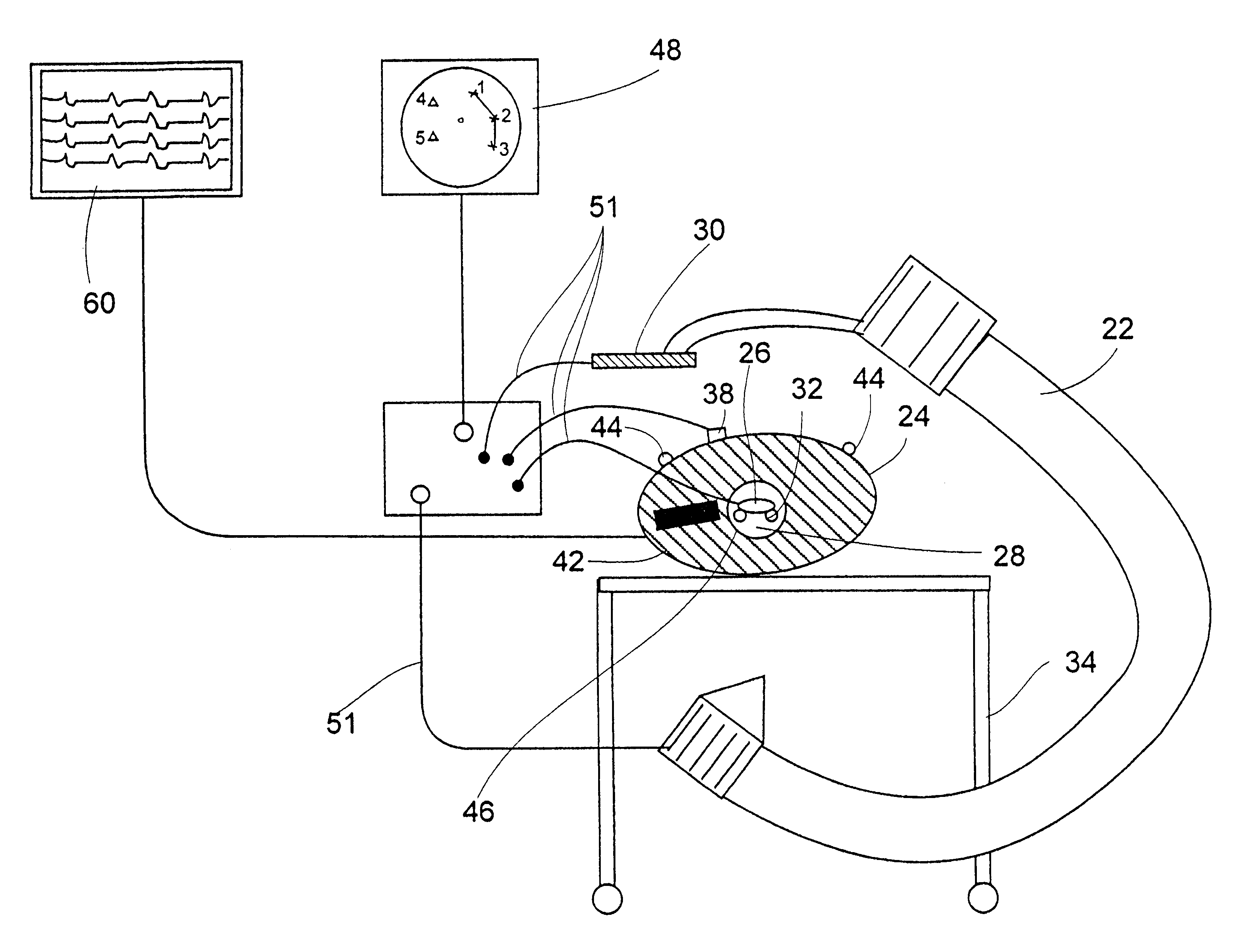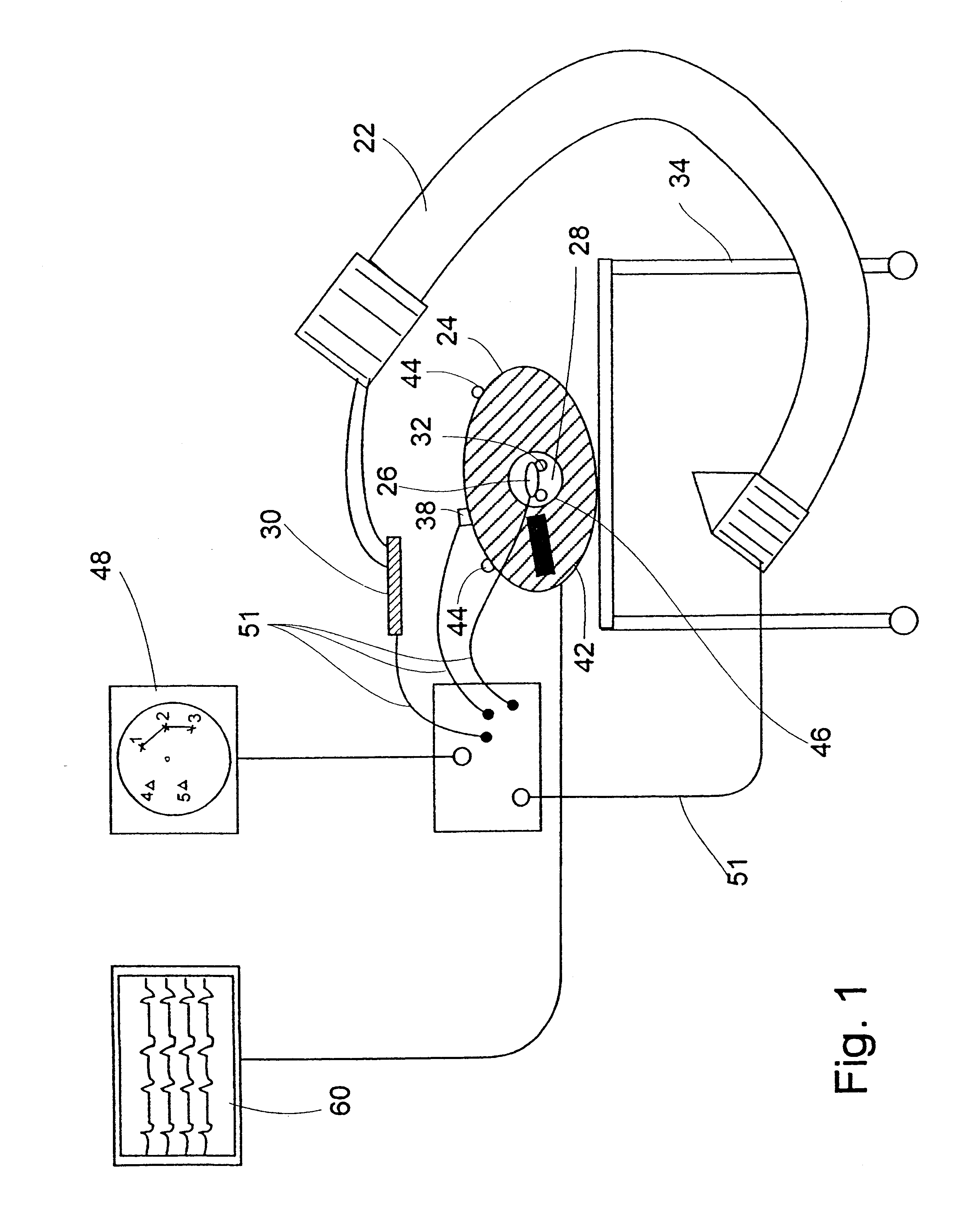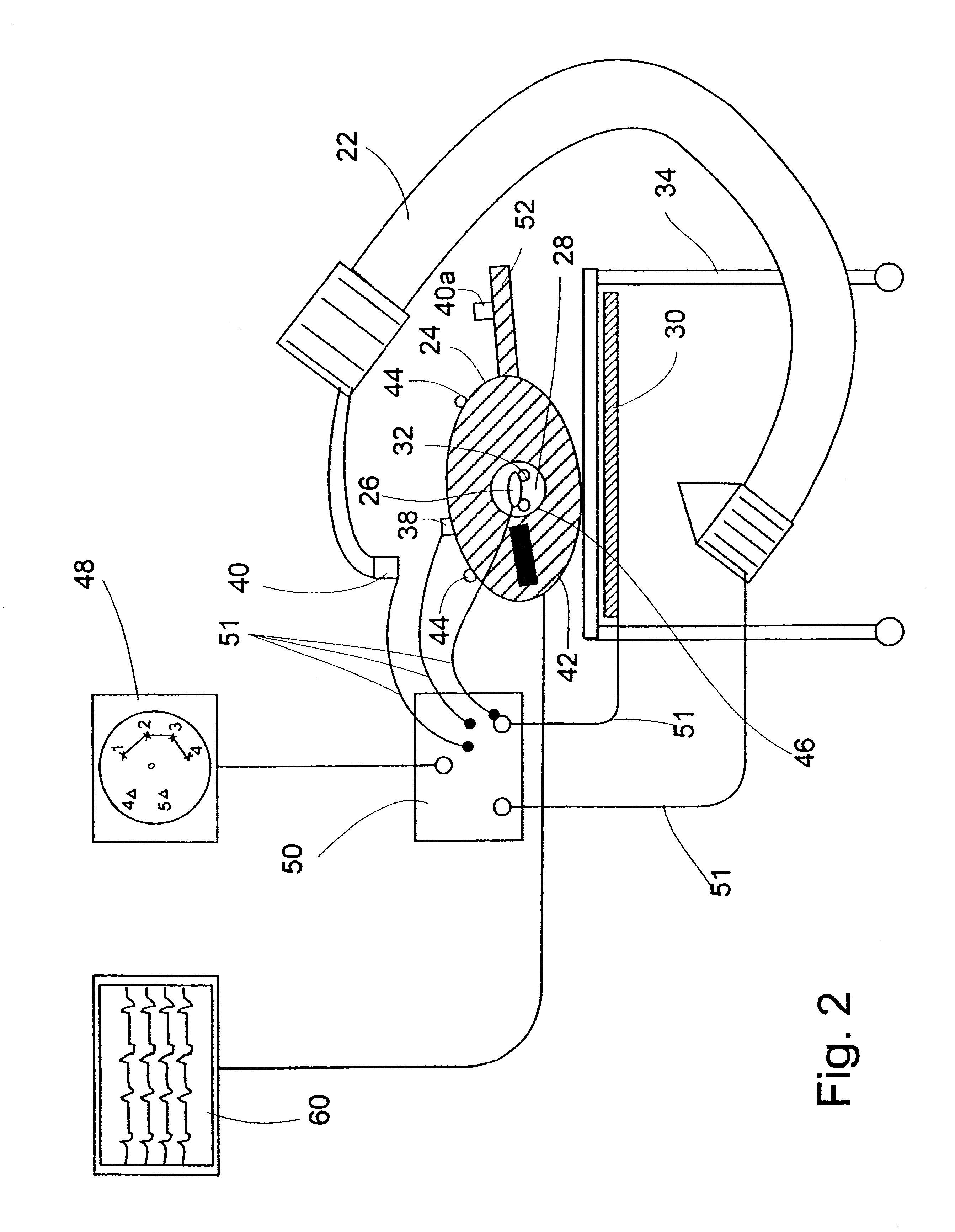System and method of recording and displaying in context of an image a location of at least one point-of-interest in a body during an intra-body medical procedure
a technology an image, which is applied in the field of system and method of recording and displaying in context of an image the location of at least one point-of-interest in the body during an intra-body medical procedure, can solve the problems of inability to teach the co-establishment of the location of the imaging apparatus or the image, visual memorization and achieves undesirable location shifts, completely undetectable, and high subjectiveness
- Summary
- Abstract
- Description
- Claims
- Application Information
AI Technical Summary
Benefits of technology
Problems solved by technology
Method used
Image
Examples
Embodiment Construction
Reference is now made to the following example, which together with the above descriptions, illustrate the invention in a non limiting fashion.
Assume a first system of coordinates {K,L,F} which defines the location of an of an imaging instrument, say a fluoroscope having a source and an imaging plane.
Assume a second system of coordinates {X,Y,Z} which defines the location of a location implement.
Define {k.sub.0,l.sub.0,f.sub.0 } as the origin of the {X,Y,Z} system as reflected on the {K,L,F} system of coordinates.
The {X,Y,Z} system is rotated with respect to the {K,L,F} system.
The rotation operator, T, is a matrix of 3.times.3 terms which satisfies the orthonormality condition.
The location implement implemented in the catheter is at {x,y,z} as measured in the {X,Y,Z} system.
The location implement is imageable and therefore will be reflected on the image plane of the imaging instrument. The location of its reflection thereon is {k,l,f}, wherein f is the distance between the radiation...
PUM
 Login to View More
Login to View More Abstract
Description
Claims
Application Information
 Login to View More
Login to View More - R&D
- Intellectual Property
- Life Sciences
- Materials
- Tech Scout
- Unparalleled Data Quality
- Higher Quality Content
- 60% Fewer Hallucinations
Browse by: Latest US Patents, China's latest patents, Technical Efficacy Thesaurus, Application Domain, Technology Topic, Popular Technical Reports.
© 2025 PatSnap. All rights reserved.Legal|Privacy policy|Modern Slavery Act Transparency Statement|Sitemap|About US| Contact US: help@patsnap.com



